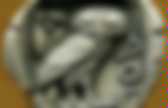

3 Strategies to Improve Student Writing Instantly. Editor's Note: A version of this post first appeared on Techie Teacher and Character Coach.

3 Strategies to Promote Independent Thinking in Classrooms. Imagine the intentional focus you would bring to crossing a rushing creek.
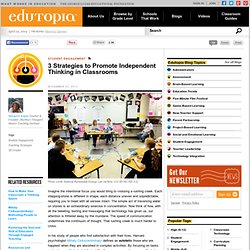
Each stepping-stone is different in shape, each distance uneven and unpredictable, requiring you to tread with all senses intact. The simple act of traversing water on stones is an extraordinary exercise in concentration. Now think of how, with all the tweeting, texting and messaging that technology has given us, our attention is frittered away by the mundane. The speed of communication undermines the continuum of thought.
That rushing creek is much harder to cross. In his study of people who find satisfaction with their lives, Harvard psychologist Mihaly Csikszentmihalyi defines as autotelic those who are happiest when they are absorbed in complex activities. Teachers can utilize three strategies to cultivate improved focus: sequencing instruction, recovery from mistakes, and setting goals. 1. Teaching Your Students How to Have a Conversation. I was recently in a third grade classroom and was struck by the presence of rules that were posted for how to have a conversation.

The poster said, "Each person must contribute to the discussion but take turns talking. Ask each other, 'Would you like to add to my idea? ' or 'Can you tell us what you are thinking? ' Ask questions so that you understand each other's ideas. Say, 'Can you tell me more about that? ' Having visited many middle and high schools, I think these same rules could -- and probably should -- be posted there as well. 30 Habits Of Highly Effective Teachers.
Editor’s Note: We often look at the qualities and characteristics of good teaching and learning, including the recent following pieces:
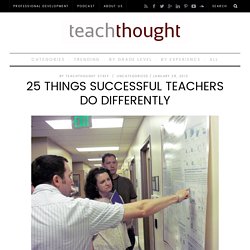
Dialogue – My Big Campus. Writers of stories and novels create characters, and they want those characters to seem as real as possible.

The process of creating a character is called characterization. Genre: What kind of book is that? Events in Instruction- Event #5. Get me outta here! About these ads Share this: Share. Events in Instruction- Event #7. Inspiring Creativity. Pay attention, please… Please, I need you to participate… Events in Instruction- Event #3. Events in Instruction- Event #4. Multimedia. Thousands of films and books are available to assist educators in representing multicultural topics.

The highlighted links provide listings of materials as well as a rubric for establishing a multicultural classroom library. Films Teaching in Urban Schools: Lessons from Washington D.C. Diversity Resources - This site provides educators with a list of many films with multicultural topics. Summaries of film content are provided. Films that Highlight Societal Issues - Published by an organization dedicated to making films that address social issues and encourage critical thinking about values and beliefs, this site provides educators many resources for classroom media. Multicultural Education & Culturally Responsive Teaching - WISE: Working to Improve Schools and Education. Multicultural Education in Your Classroom. America has always been referred to as a melting pot, but ideally, it's a place where we strive to invite everyone to celebrate exactly who they are.
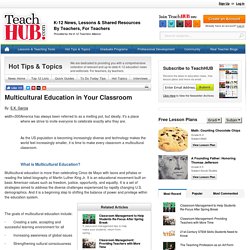
As the US population is becoming increasingly diverse and technology makes the world feel increasingly smaller, it is time to make every classroom a multicultural classroom. What is Multicultural Education? Multicultural education is more than celebrating Cinco de Mayo with tacos and piñatas or reading the latest biography of Martin Luther King Jr. It is an educational movement built on basic American values such as freedom, justice, opportunity, and equality. It is a set of strategies aimed to address the diverse challenges experienced by rapidly changing U.S. demographics. 21st-Century Teacher Education. For almost as long as there have been institutions dedicated to the preparation of new teachers, the endeavor has come in for criticism.
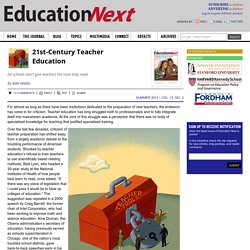
Teacher education has long struggled both to professionalize and to fully integrate itself into mainstream academia. At the core of this struggle was a perception that there was no body of specialized knowledge for teaching that justified specialized training. Over the last few decades, criticism of teacher preparation has shifted away from a largely academic debate to the troubling performance of American students. Www.learningforward.org/docs/default-source/commoncore/establishing-time-for-professional-learning.pdf?sfvrsn=4. Infographic: 15 Helpful Strategies (and Unhelpful Practices) for ELLs. Principle 2 Home - Craft the Driving Question. How to Refine Driving Questions for Effective Project-Based Learning. In my last blog about driving questions, we reviewed the purpose of the driving question as well as some tools to help you refine your driving questions.
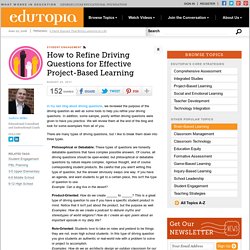
In addition, some sample, poorly written driving questions were given to have you practice. We will review them at the end of the blog and look for some exemplars from all of you. A Nation at Risk: 30 Years Later. How to Become a Distinguished/Highly Qualified ("4") Teacher. Debunking Five Myths About Project-Based Learning. Many teachers and administrators -- not to mention the general public -- might have the wrong impression of PBL.
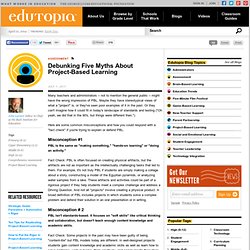
Maybe they have stereotypical views of what a "project" is, or they've seen poor examples of it in the past. Or they can't imagine how it could fit in today's landscape of standards and testing ("Oh yeah, we did that in the 90's, but things were different then. ") Here are some common misconceptions and how you could respond with a "fact check" if you're trying to explain or defend PBL. Misconception #1 PBL is the same as "making something," "hands-on learning" or "doing an activity.
" Fact Check: PBL is often focused on creating physical artifacts, but the artifacts are not as important as the intellectually challenging tasks that led to them. Misconception # 2 PBL isn't standards-based. Solo Taxonomy. Solo Taxonomy has been sitting on my to do list for a while. Dean Groomduring his presentation at MICDS reminded me and I took a little time to have a play with it.SOLO stands for Structure of Observed Learning Outcomes. It was developed in 1982 by John B. Biggs and Kelvin Collis. It is essentially a hierarchy which has 5 stages or levels that attempts to assess the students learning based on the quality of their work. Like Bloom’s taxonomy it looks and structures many of the key verbs used in assessment into different levels. Moving Ahead With Common Core. What Does Good Teaching Look Like? - Teacher in a Strange Land.